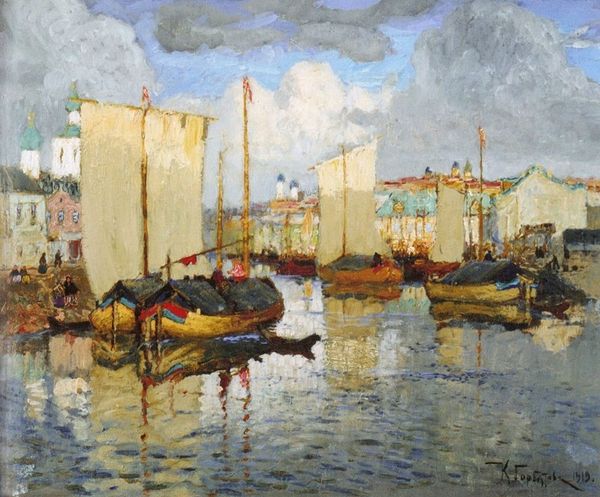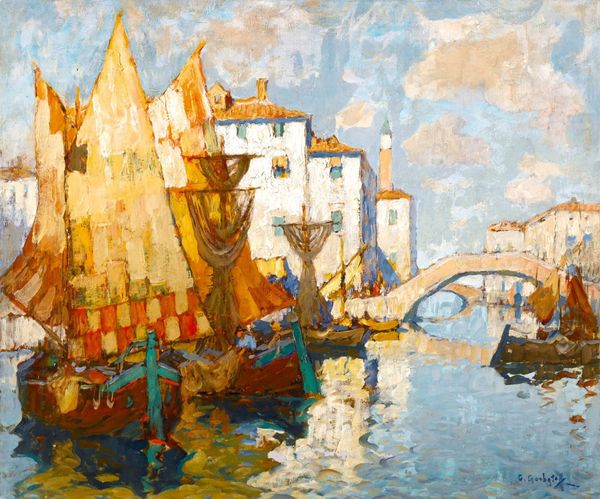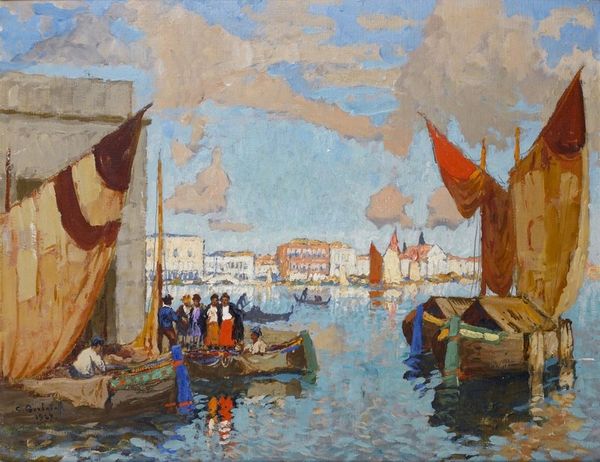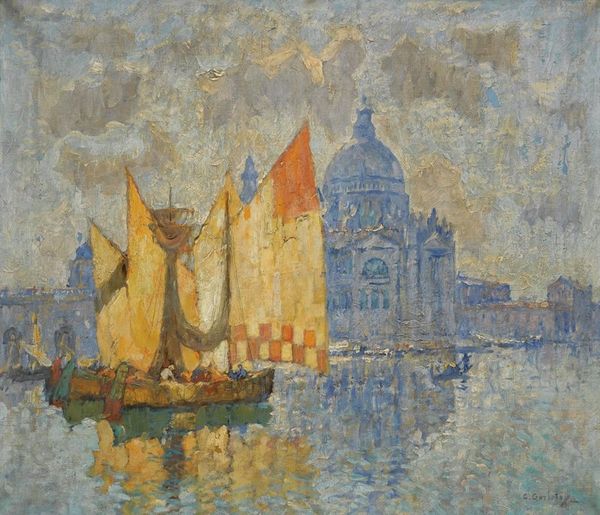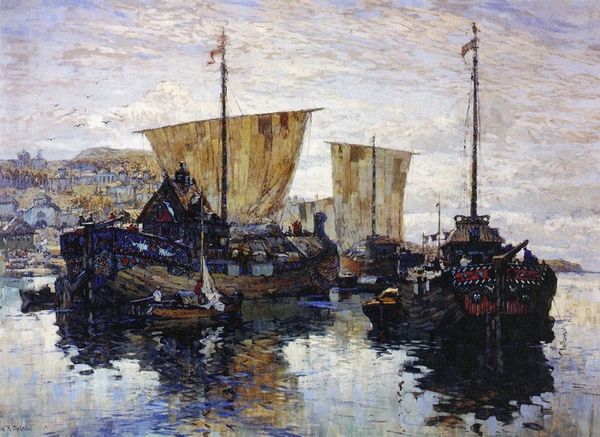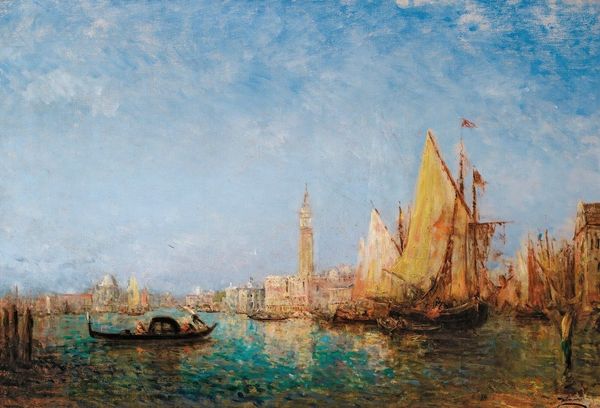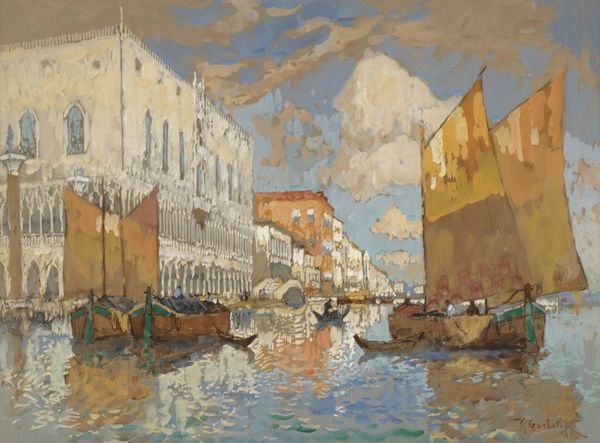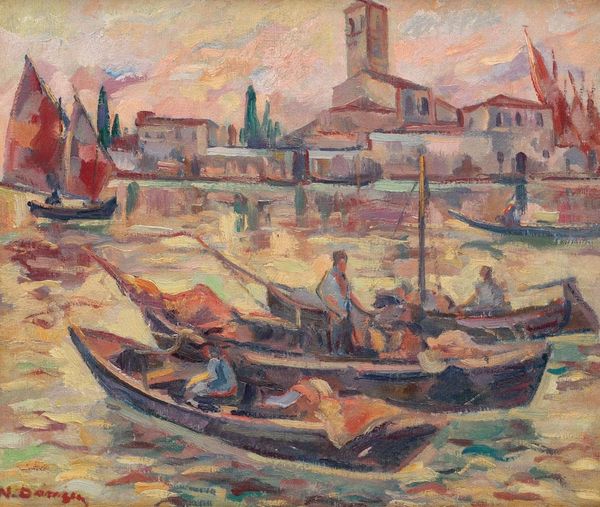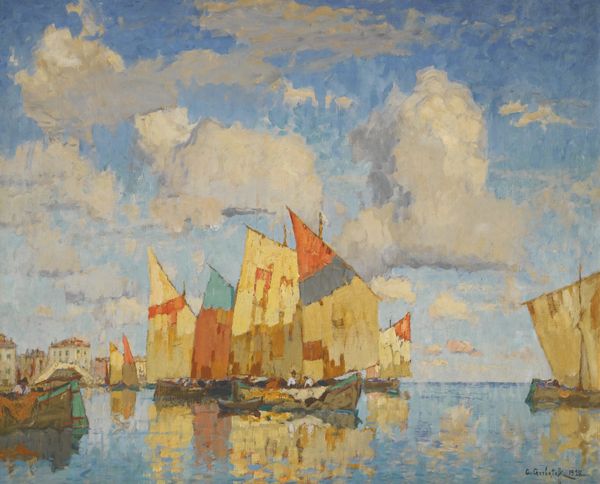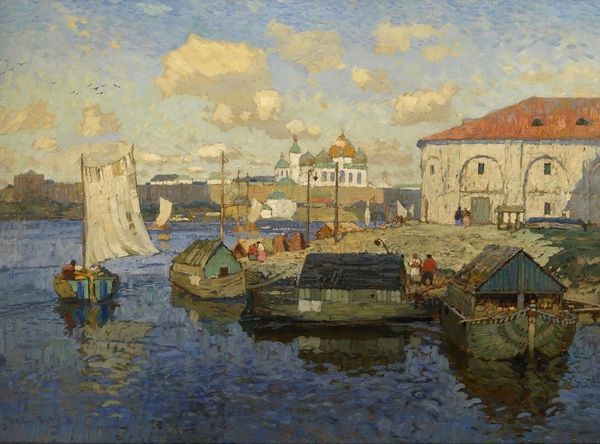
Copyright: Public domain
Curator: Konstantin Gorbatov painted this canvas, titled "Seville," in 1913. Editor: It’s remarkably serene. The palette, dominated by blues, yellows and soft browns, evokes such tranquility. It feels like a memory. Curator: Yes, and one framed within a certain visual tradition. It's a cityscape executed in oil with impressionistic brushwork, but also incorporates orientalist tropes in the representation of place and the romanticism of labor. Editor: That romanticism is something I find interesting, given the broader political landscape of 1913. The work sits at this nexus of artistic expression and silent societal narrative; it makes you wonder whose stories aren’t being shown in this "serene" tableau. Are these figures rendered just for picturesque consumption? Curator: That's a fair critique. But consider the cultural appeal: towers and harbors held deep significance. The tower could symbolize aspiration and achievement, its image repeated through the reflection upon the water acting as a signifier for societal memory, and maybe even hubris. The boats mirror that reaching-out towards the future, and recall trade and travel. These were vital, romantic elements of nation-building. Editor: I think reading those structures as inherent positives papers over the social and economic complexities of these elements in a pre-war world teetering toward vast upheaval. These symbols can have darker meanings relating to domination and control for many depending on their relationship with those "aspirations". Curator: I see what you mean. It all boils down to whose perspective is prioritized, and how those traditional symbols of progress can, in certain light, tell other stories. It's a potent tension. Editor: Definitely. It makes me appreciate how images, seemingly placid at first glance, are really these multi-layered visual texts, and how the simple act of observing them can lead us down surprisingly critical pathways. Curator: Absolutely. Exploring the interplay between art, intention, and socio-historical understanding, you enrich our understanding of the piece and also history itself. Thank you.
Comments
No comments
Be the first to comment and join the conversation on the ultimate creative platform.
